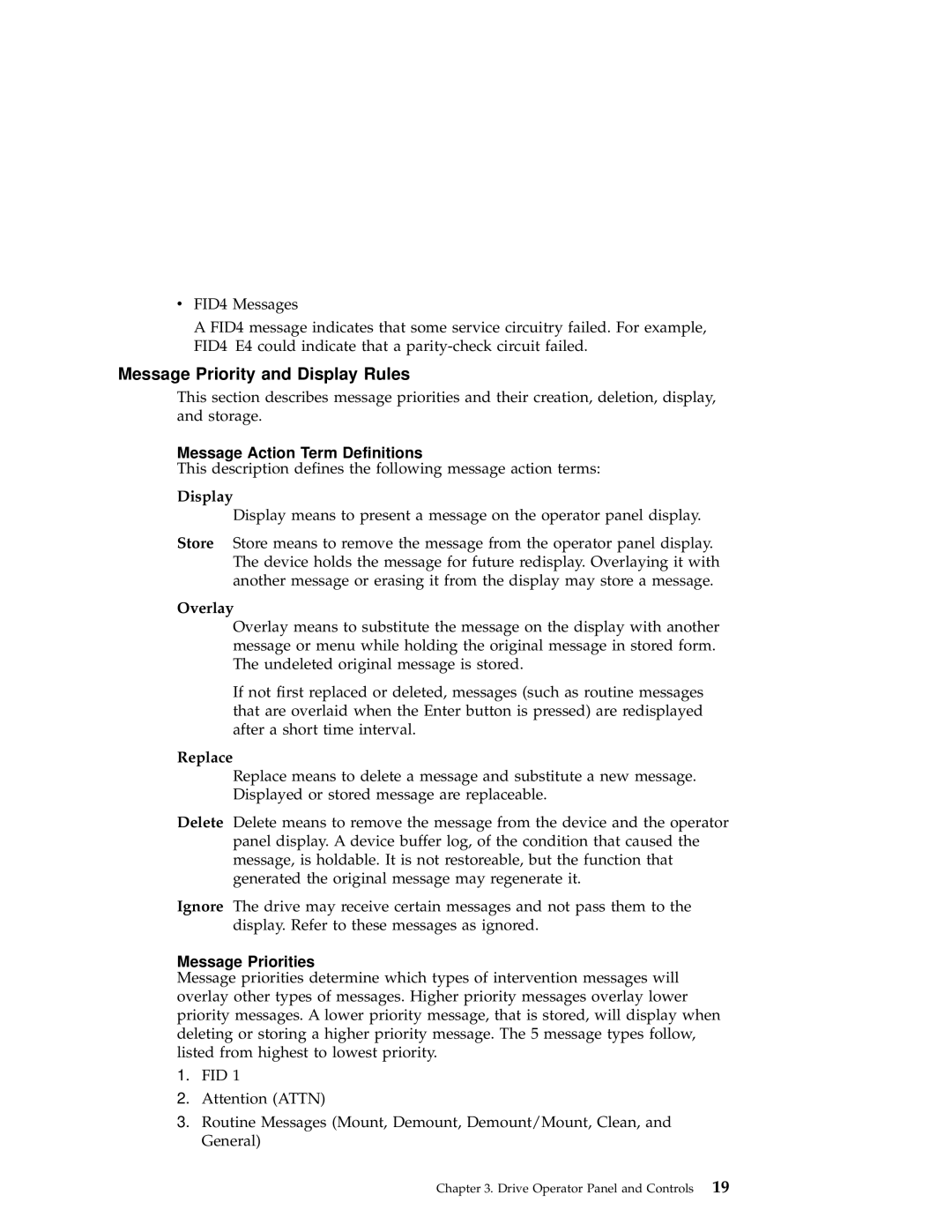vFID4 Messages
A FID4 message indicates that some service circuitry failed. For example, FID4 E4 could indicate that a
Message Priority and Display Rules
This section describes message priorities and their creation, deletion, display, and storage.
Message Action Term Definitions
This description defines the following message action terms:
Display
Display means to present a message on the operator panel display.
Store Store means to remove the message from the operator panel display. The device holds the message for future redisplay. Overlaying it with another message or erasing it from the display may store a message.
Overlay
Overlay means to substitute the message on the display with another message or menu while holding the original message in stored form. The undeleted original message is stored.
If not first replaced or deleted, messages (such as routine messages that are overlaid when the Enter button is pressed) are redisplayed after a short time interval.
Replace
Replace means to delete a message and substitute a new message. Displayed or stored message are replaceable.
Delete Delete means to remove the message from the device and the operator panel display. A device buffer log, of the condition that caused the message, is holdable. It is not restoreable, but the function that generated the original message may regenerate it.
Ignore The drive may receive certain messages and not pass them to the display. Refer to these messages as ignored.
Message Priorities
Message priorities determine which types of intervention messages will overlay other types of messages. Higher priority messages overlay lower priority messages. A lower priority message, that is stored, will display when deleting or storing a higher priority message. The 5 message types follow, listed from highest to lowest priority.
1.FID 1
2.Attention (ATTN)
3.Routine Messages (Mount, Demount, Demount/Mount, Clean, and General)
Chapter 3. Drive Operator Panel and Controls 19
